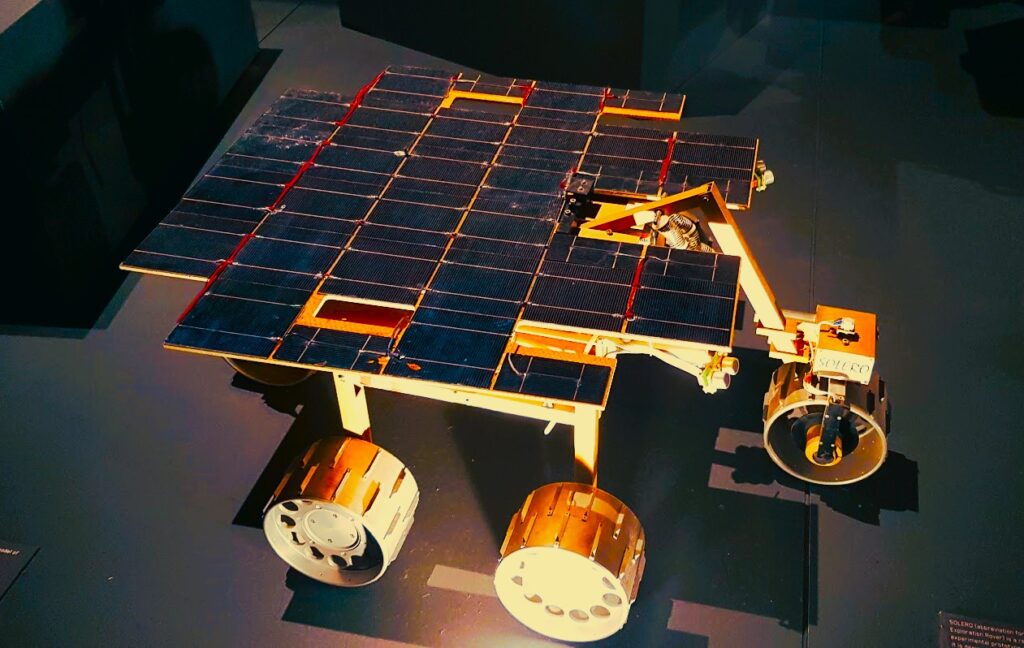Twist and turn: Artificial ‘muscles’ for safer and softer robots

Innovations in solar energy. Image by Tim Sandle (Barbican, London).
Simplified, low-cost soft actuators enable worm-like crawling, bicep-like lifting and more in soft robots, according to a new scientific development. This arises because the new robotic actuator extends and contracts much like a biological muscle. In particular, the soft actuator stiffens like a human muscle, a property that historically has been missing from soft robotics.
In trials, researchers from Northwestern University have demonstrate the actuator in a crawling soft robot and artificial bicep. The crawling robot bends in tight environments; the artificial bicep lifts weights. The goal was to make robots that behave and move like living organisms.
In these experiments, the cylindrical soft robot navigated the tight, hairpin curves of a narrow pipe-like environment, and the bicep was able to lift a 500-gram weight 5,000 times in a row without failing.
What is also remarkable about the development is the low cost. Since the researchers 3D-printed the body of the soft actuator using a common rubber, the resulting robots cost about $3 in materials, excluding the small motor that drives the actuator’s shape change.
This pricing mechanism sharply contrasts typical stiff, rigid actuators used in robotics, which often cost hundreds to thousands of dollars.
To develop the new actuator, the researcher 3D-printed cylindrical structures called “handed shearing auxetics” (HSAs) out of rubber. HSAs embody a complex structure that enables unique movements and properties.
For example, when twisted, HSAs extend and expand. Although Truby and Kaarthik 3D-printed similar HSA structures for robots in the past, they were bound to using expensive printers and rigid plastic resins. As a result, their previous HSAs could not bend or deform easily.
The resulting worm-like robot was compact (measuring just 26 centimetres in length) and crawled — both backward and forward — at a speed of just over 32 centimetres per minute. Truby noted that both the robot and artificial bicep become stiffer when the actuator is fully extended. This was yet another property that previous soft robots were unable to achieve.
Commenting on the development lead researcher Ryan Truby states: “Roboticists have been motivated by a long-standing goal to make robots safer. If a soft robot hit a person, it would not hurt nearly as much as getting hit with a rigid, hard robot. Our actuator could be used in robots that are more practical for human-centric environments. And, because they are inexpensive, we potentially could use more of them in ways that, historically, have been too cost prohibitive.
The new actuator could be used to develop inexpensive, soft, flexible robots, which are safer and more practical for real-world applications.
The research appears in the journal Advanced Intelligent Systems. The research is titled: “A flexible, architected soft robotic actuator for linear, servo-driven motion”.
Twist and turn: Artificial ‘muscles’ for safer and softer robots
#Twist #turn #Artificial #muscles #safer #softer #robots





